Vaccination is one of the most important things you need to give your children. It protects them from various infections and also in case they get infected with it, the infection might be milder in form. So, getting your child vaccinated will be one of the best decisions you make for them.
As the Government of India has implemented the Universal Immunization Program (UIP), Vaccine-preventable diseases (VPDs) can be significantly controlled and prevented, provided we take our children for immunization at the required time, and guide others as well for getting their children vaccinated.
All the vaccines under Universal Immunization Program (UIP) are free of cost in the Government Institutes of India.
Here is a list of all the vaccines (UNICEF India) you need to give your child along with their importance and the diseases they prevent. The info-graphics depicted in this article are from UNICEF India.
BCG Bacille Calmette-Guérin Vaccine
BCG Vaccine has been administered since a very long time now, and prevents the child from (childhood) disseminated tuberculosis and meningitis, which are deadly diseases and leading cause of death and which can be prevented if proper immunization is done. It is made from the weakened strains of TB (tuberculosis) bacteria. It is only given to healthy babies and is contraindicated in immunocompromised children e.g. persons who are HIV infected.

How and when is it given?
The vaccine is injected just under the skin (intramuscular) and is given on the left forearm. The vaccine should be given at birth.
What care should be taken after the vaccine?
Most of the times the injection site gets hardened and there is a formation of a blister. The blister will change into an ulcer 2-6 weeks after the injection. This might be painful and take a few weeks to heal completely. There might be a mark at the injection site.
Bathe the child as usual and pat dry the area.
Do apply anything on the injection site until and unless advised by your doctor.
Use a sterile swab to clean the are if required.
There might be pain and inflamed glands (lymph nodes) under the arm in some cases. You should contact your doctor immediately if you notice it.
Who should be given the vaccine?
- 1. New born kid who is not immunocompromised.
- 2. Children less than the age of 5 years, who are staying or going to travel in a country which has a
higher rate of Tuberculosis. - 3. Children who’s care givers or parents are infected with TB.
Who should not be given the vaccine?
- 1. BCG is not administered in countries like United States, United Kingdom because of the low risk of infection.
- 2. Children who have been infected with TB previously are not given the vaccine.
- 3. Positive Mantoux test (test done to detect if you have previously been infected with tuberculosis).
Children who show a positive Mantoux test are not given BCG vaccine.
Hepatitis B Vaccine
Hepatitis B is a liver infection which is life threatening and can be prevented by the vaccine. People infected with hepatitis B are at a higher risk of cirrhosis of the liver and even death.
It has been recommended by WHO to vaccinate the child with Hepatitis B vaccine
1st DOSE within first 24 hours of birth and the
2nd DOSE after 4 weeks
3rd DOSE is given when the infant is 24 weeks old.
The child gets an immunity from Hepatitis B for at least 20 years and in most cases it lasts a life time.

Who Should be Vaccinated?
- 1. New born baby
- 2. Children less than 19 years of age who have not been vaccinated
- 3. Adults with multiple sexual partners
- 4. Adults having sex with person infected with Hepatitis B
- 5. Adults who are drug users
- 6. Health care workers having a chance to get exposed to blood and blood products
- 7. People infected with HIV
- 8. People on end stage renal failure.
- 9. Person traveling to counties which have high rate of hepatitis B
- 10. Person infected with Hepatitis C
Side Effects of the Vaccine
According to the Heaptitis B foundation, Hep B vaccine is one of the most safest and effective vaccines ever made. So, there is almost always no side effects.
You can see the routine side effects which you can see from any other vaccine, like soreness, fever and fatigue. If you feel dizzy report to your doctor immediately.
Oral Polio Vaccine (OPV)

OPV is widley used vaccine in India and the first dose is given at birth. “Pulse Polio” immunization campaign with the iconic ‘Do Boond Zindagi Ki’ tagline, was started on 2nd October 1994, to make India a polio free country, and this mission was achieved.
Poliomylitis is a disease which causes the paralysis of the muscles, usually the legs but can also effect the breathing muscles.
OPV is not given in any of the parts of the US, only IPV is give.
When should it be given?
1st DOSE : Birth
2nd DOSE : 6 weeks or within 1-2 months of age
3rd DOSE : 14 weeks months of age
4th DOSE : 16-24 months of age
How is it given?
The vaccine is administered by giving 2 drops of the medicine directly in the mouth of the child. No injection is required.
Fractional Doses of Inactivated Polio Vaccine (fIPV)

Polio vaccine can also be given in injectable forms. Inactivated Polio Vaccine can be given alone or in combination with the other vaccines. fIPV vaccine administers a fraction of dose out of the complete dose of the IPV vaccine. It has been reported to provide better immunity.
It can be given to children who have been vaccinated with OPV or have not been vaccinated at all.
When is it given?
The fIPV is given in 2 doses:
1st Dose : 6 weeks of age
2nd Dose : 12 weeks of age
How is it given?
0.1ml (1/5th of the full dose) is administer intradermal. There might be a little soreness or redness over the injection site and the child might have mild fever.
Pentavalent Vaccine

This 5 in 1 vaccine (Pentavalent Vaccine) helps preventing the 5 deadly diseases:
- 1. Diphtheria
- 2. Pertusis
- 3. Tetanus
- 4. Hepatitis B
- 5. Hib Infections
The DPT and Hepatitis B vaccine was already a part of the vaccination schedule in India but the Hib Vaccine has been added to form the pentavalent vaccine. The Hib Vaccine provides protection against diseases like pneumonia, meningitis, bacteremia, epiglottitis, septic arthritis etc. It is given intramuscular on the anterolateral aspect of mid thigh.
The booster does of DPT at 16-24 months and 5-6 years will be continued as before.
Advantages:
- 1. All the 5 diseases are covered in a single injection, therefore less pricks.
- 2. No separate vaccine for DPT or Hep B is required except the birth dose of Hep B, and the booster
dose of DPT. - 3. There is no booster dose to be given after the 3 doses are given.
- 4. No side effects are noted, except redness and swelling on the site of immunization which might
occur on the 2nd day. Rarely children might have mild fever which lasts for a day or two.
Rotavirus Vaccine

Rotavirus is a virus which has a wheel like shape as visible under the microscope and thus its name. Rotavirus is a leading cause of diarrhea in children globally as well as in India. It causes loose stools, vomiting, fever (1/3rd of the patients), electrolyte imbalance, shock and even death of it is not treated adequately.
The best thing to do is prevent the deadly disease by vaccinating your child against it. The Government of India has introduced the Rotavirus Vaccine in the Universal Immunization Programme (UIP) in a phased manner i.e. in stages (3 doses).
How and when is the vaccine given?
5 drops of the oral drops (0.5ml) are given to the child .
1st Dose: 6 weeks (1.5 months)
2nd Dose: 10 weeks (2.5 months)
3rd Dose: 14 weeks (3.5 months)
Children till 2 years of age are more susceptible, to rotavirus diarrhoea. After the age of 2 years, the child gets exposed to the virus and gets immunity against it as antibodies are formed. So, no booster dose of the vaccine is required.
PCV Vaccine

Pneumococcal conjugate vaccine (PCV) protects against Pneumococcal Pneumonia. The disease is caused by the bacterium streptococcus pneumoniae which can cause
1. Pneumonia i.e. the inflammation of the lungs
2. Bacteraemia/sepsis i.e. the infection of the bloodstream, with or without infection of secondary sites,
e.g. meningitis
3. Bacterial meningitis i.e. the infection of the membranes that cover and protect the spinal cord and
brain
4. Otitis media the middle ear infection
5. Sinusitis
6. Bronchitis.
Pneumococcal pneumonia is a lung disease which causes inflammation of the lungs or collection of fluids. This makes breathing very difficult, and if the infant is severely ill might even cause difficult in feeding, wheezing sounds, convulsions, unconsciousness and even death. So, the best thing to do is get the child vaccinated.
Kids under the age of 2 years or immunocompromised adults are at maximum risk of getting pneumococcal pneumonia.
How and when is the vaccine given?
The vaccine is given as an intramuscular injection in the anterolateral aspect of the right mid thigh of infants.
1st Dose: 6 Weeks (1.5 months)
2nd Dose: 14 Weeks (3.5 months)
3rd Dose: 9 Months (Booster Dose)
The side effects are the same as with any other vaccine. Redness, swelling, pain, or tenderness at the injection site, fever, fatigue, are few of the side effects that can be encountered.
Measles Rubella Vaccine
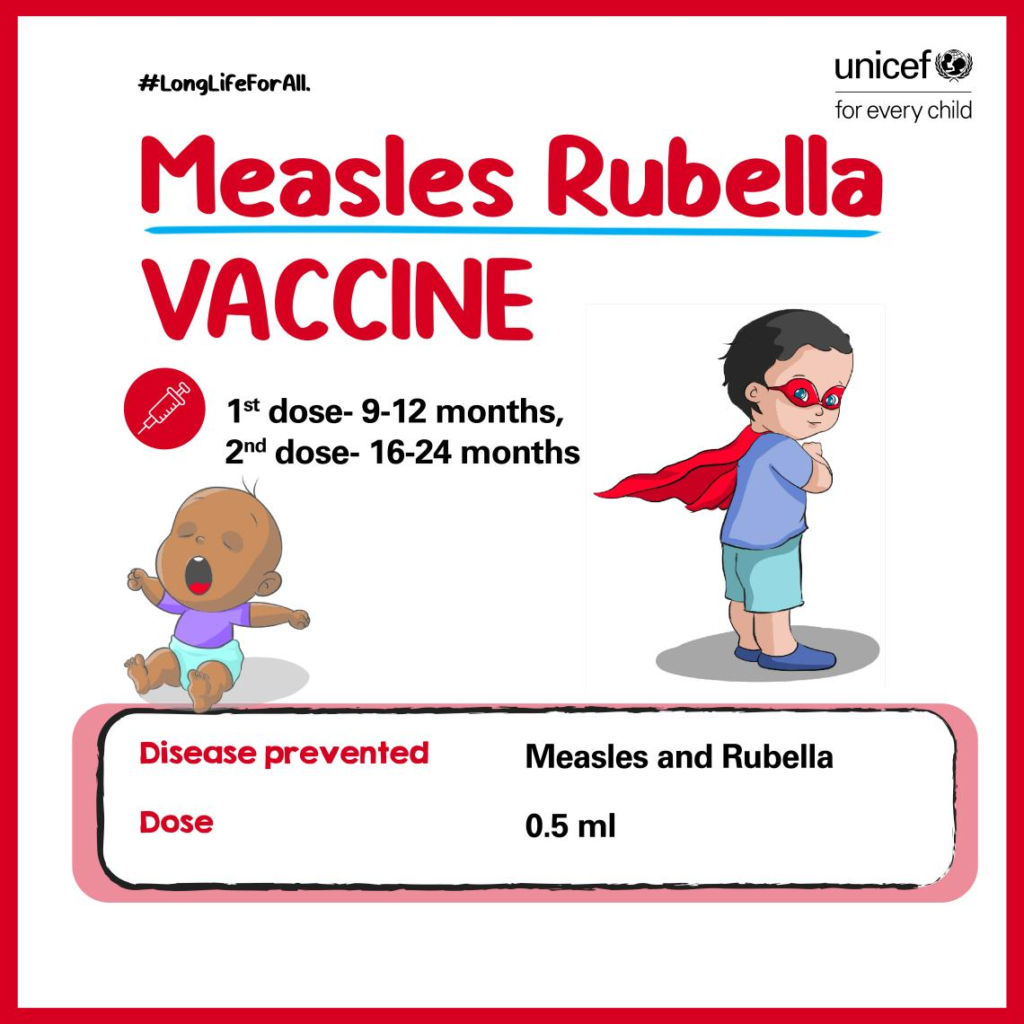
Measles is a highly contagious disease and can spread through direct contact from the infected person. It is a deadly disease and so vaccination is important. It affects the respiratory tract and then spreads through out the body.
The first symptom is a high grade fever, and then slowly rashes start on the body, starting with the cheeks and upper part of the neck and gradually spreading to the whole body. There is a sore throat, runny nose, cough as well. The complications are mainly linked with children less than 2 years, malnourished children or immunocompromised children. The vaccine gives a life long protection in most of the children.
Initially the vaccine given for measles and rubella included a third component the mumps vaccine. But it has been found that mumps is not much of public health importance so the vaccine administered now is MR (Measles and Rubella) and not MMR (Measles, Mumps and Rubella).
How and when is the vaccine administered?
Measles vaccine is administered subcutaneously.
1st Dose: 9-12 Months
2nd Dose: 16-24 Months
JE Vaccine

JE Vaccine is given for Japanese Encephalitis commonly know as brain fever. Japanese Encephalitis is a disease caused due to a mosquito, which spreads through the Japanese Encephalitis Virus. The symptoms of the disease includes, headache, fever, mental confusion and delirium. The only way to protect it by getting the child vaccinated. Children are more prone to the disease.
How and when is the vaccine given?
The vaccine is administered in a subcutaneous injection, and 2 doses are given.
1st Does: 9-12 months
2nd Does: 16-24 months
DPT Vaccine (Booster)
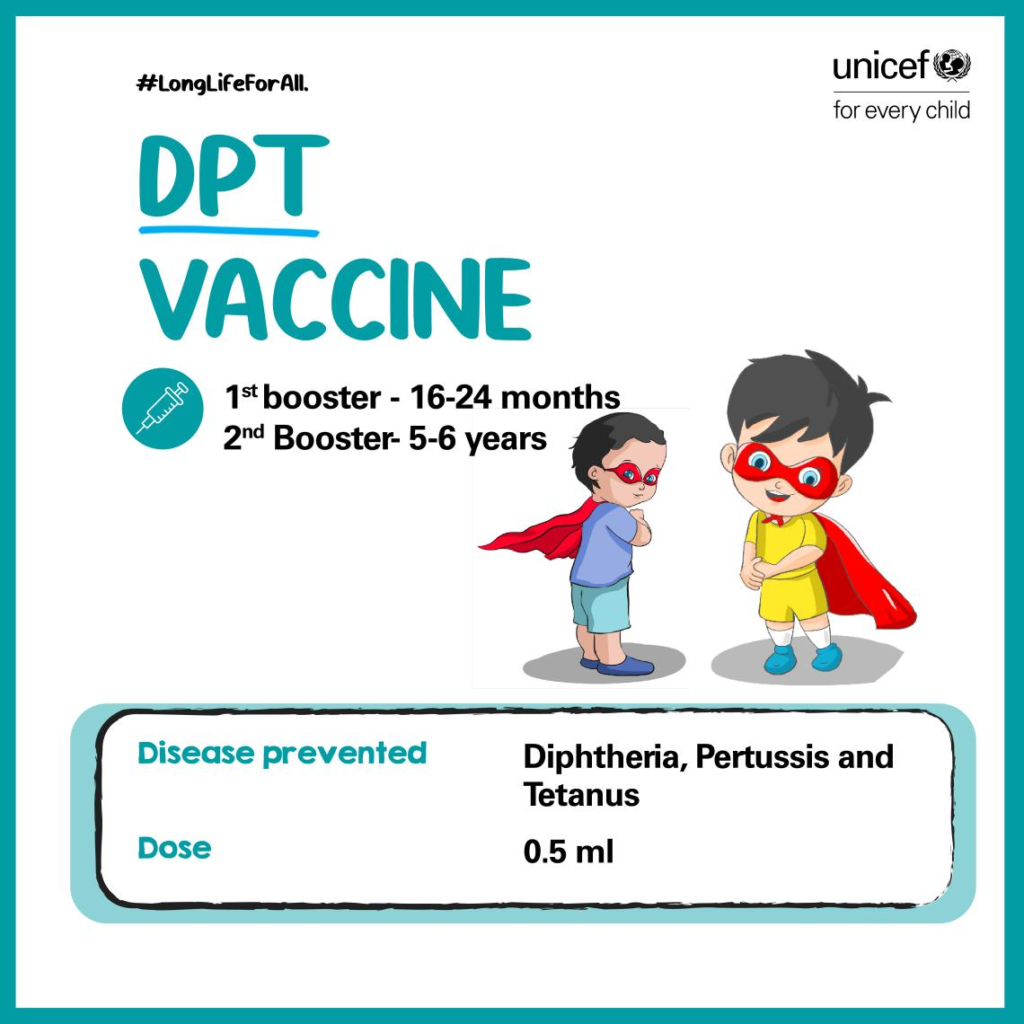
Diphtheria, Pertussis and Tetanus vaccine is included in the pentavaccine. But the booster dose for it is giving separately also.
Diphtheria is a severe infection of the throat which causes respiratory compromise, as the airway is blocked.
Tetanus is caused by an infected wound.
Pertussis is whooping cough.
When is it given?
1st Booster: 16-24 Months
2nd Booster: 5-6 Years
The adverse effects are same as that of any other vaccine. Redness, swelling, discomfort, pain, mild fever. If any other effect is seen other than these, visit your doctor asap.
Td Vaccine

Td Vaccine is the tetanus and the adult diphtheria vaccine. The TT vaccine has been replaced by the Td vaccine with a lesser component of Diphtheria antigen (d). The vaccine is given in older children and pregnant females.
When and how is it administered?
Intramuscular injection of the vaccine is given in the upper arm.
1st Dose: 10 Years of Age
2nd Dose: 16 Years of Age
Pregnant Female also are administered two doses of the vaccine during pregnancy.
1st Dose: Early in the Pregnancy
2nd Dose: 4 weeks after the First Dose
Booster Dose: 1 dose is given if the women is previously vaccinated within a span of 3 years
The side effects are similar to any other vaccine. Soreness, redness, mild fever, fatigue etc.
Vaccines help protect our children from various deadly diseases and also protects others. Babies are born with immunity for some diseases as the antibodies pass from the mother to the child, especially in the children who are breast fed. But this immunity is also for a short period of time. Vaccines are a good source to prevent many deadly diseases.
There are few other vaccines which are not included under the Universal Immunization Program but can be given to the child to prevent the disease like typhoid conjugate vaccine, meningococcal vaccine(MCV), Vitamin A etc. These vaccines are available and you can ask the pediatrician for it.
There are many myths pertaining to the vaccine use but most of them are false and should not be followed. The proper scientific information should be taken from relevant sites. Awareness regarding vaccines in India is still yet lacking. We need to make them understand who still think vaccine is not required or is harmful to the children in any way.
DOWNLOAD VACCINATION CHART
Disclaimer:
This blog provides general information about vaccination in children. The opinion and content on this blog is only for conversational purposes and should not be interpreted as medical advice pertaining to any particular individual. If the reader or any other person has a medical concern, he or she should consult with an appropriate licensed medical physician or a health care provider.

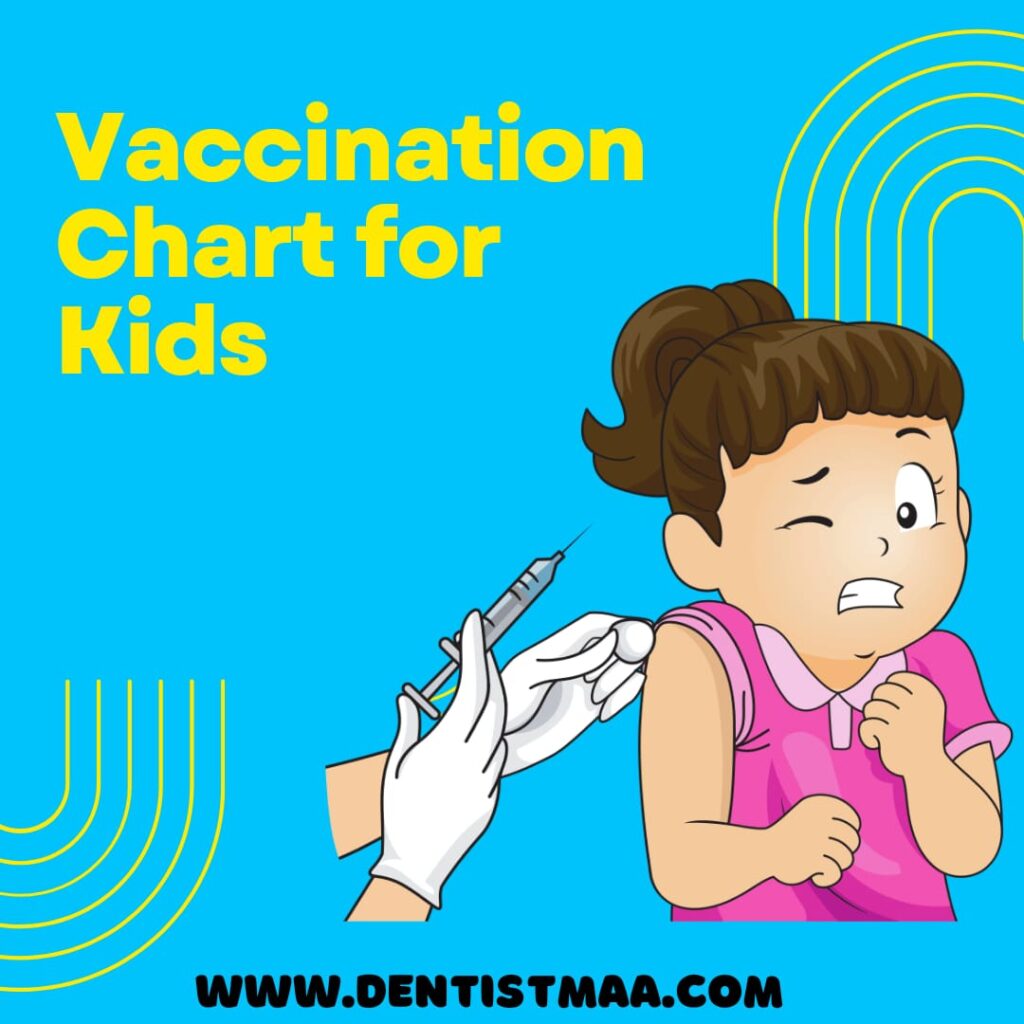

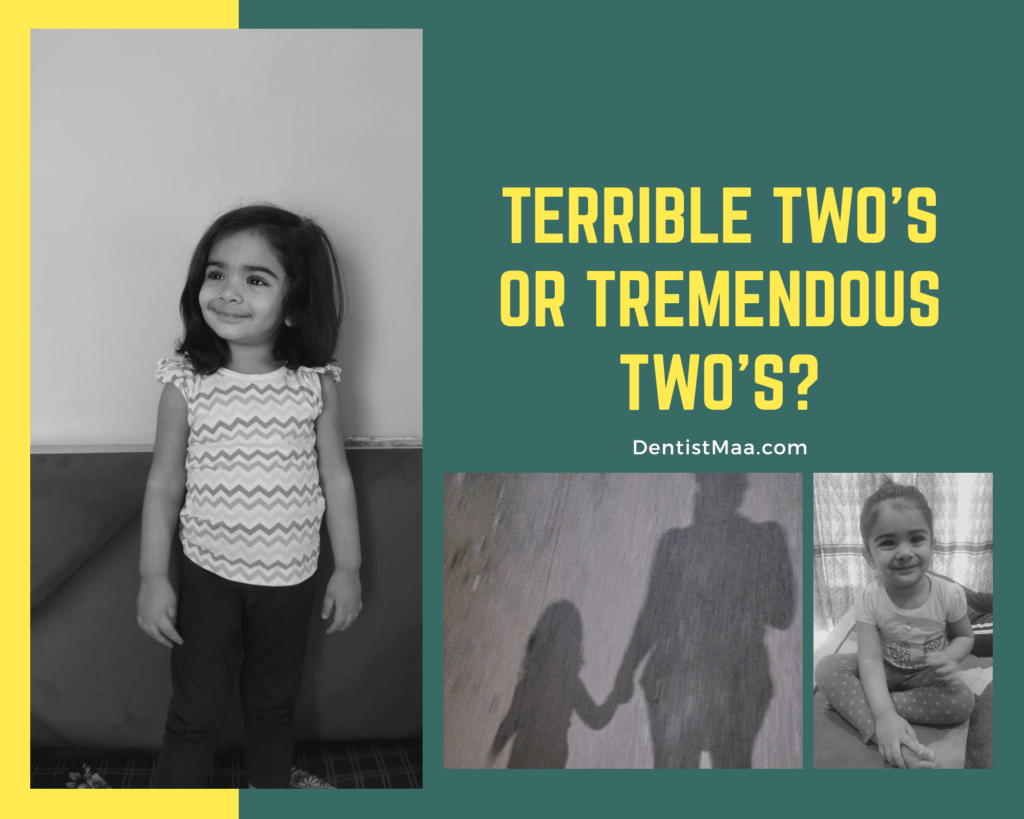
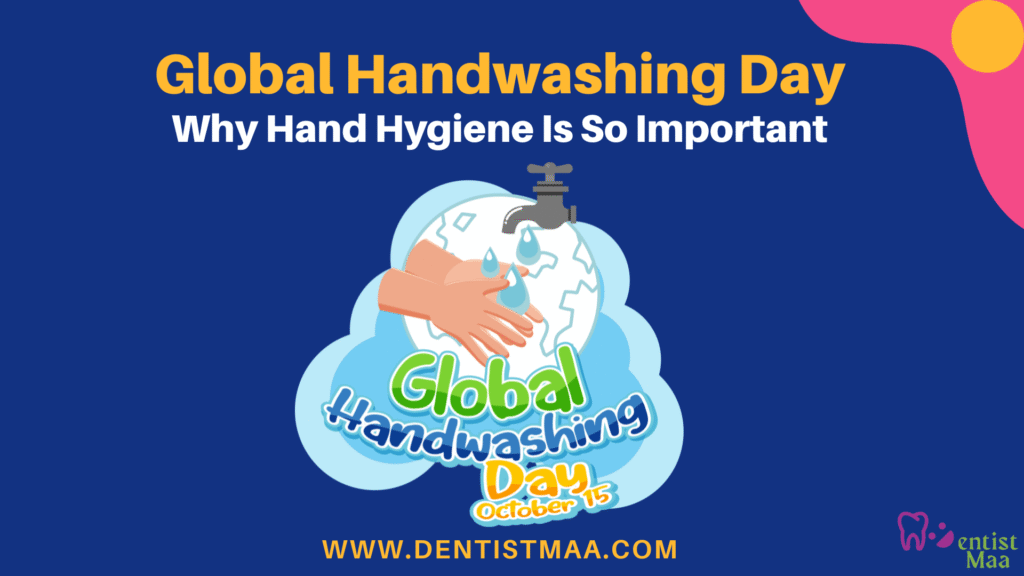
Pingback: Baby Development Milestones: 0-12 Months - DentistMaa
Very well explained about vaccination in children